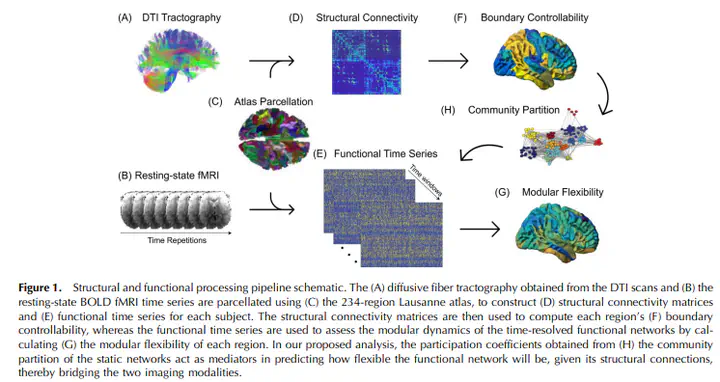Network controllability mediates the relationship between rigid structure and flexible dynamics

Abstract
Precisely how the anatomical structure of the brain supports a wide range of complex functions remains a question of marked importance in both basic and clinical neuroscience. Progress has been hampered by the lack of theoretical frameworks explaining how a structural network of relatively rigid interareal connections can produce a diverse repertoire of functional neural dynamics. Here, we address this gap by positing that the brain’s structural network architecture determines the set of accessible functional connectivity patterns according to predictions of network control theory. In a large developmental cohort of 823 youths aged 8 to 23 years, we found that the flexibility of a brain region’s functional connectivity was positively correlated with the proportion of its structural links extending to different cognitive systems. Notably, this relationship was mediated by nodes’ boundary controllability, suggesting that a region’s strategic location on the boundaries of modules may underpin the capacity to integrate information across different cognitive processes. Broadly, our study provides a mechanistic framework that illustrates how temporal flexibility observed in functional networks may be mediated by the controllability of the underlying structural connectivity.